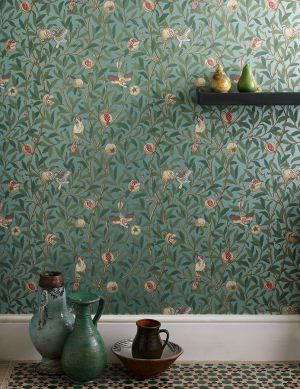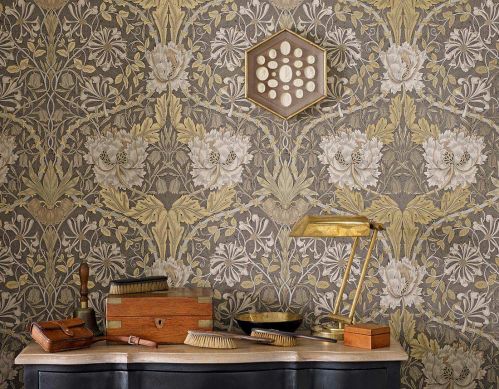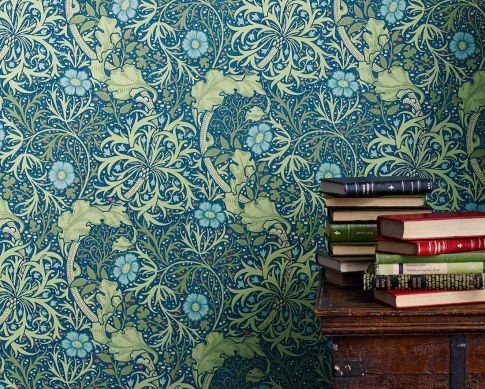When two superlatives meet: A central place where world politics are created and history is written, and an internationally renowned company depicting the country's historical events in beautiful wall decorations, thus establishing its own place in design history. We are of course referring to the White House, and to French wallpaper manufacturer Zuber. Both institutions' rich traditions come together in the so-called Diplomatic Reception Room in the White House.
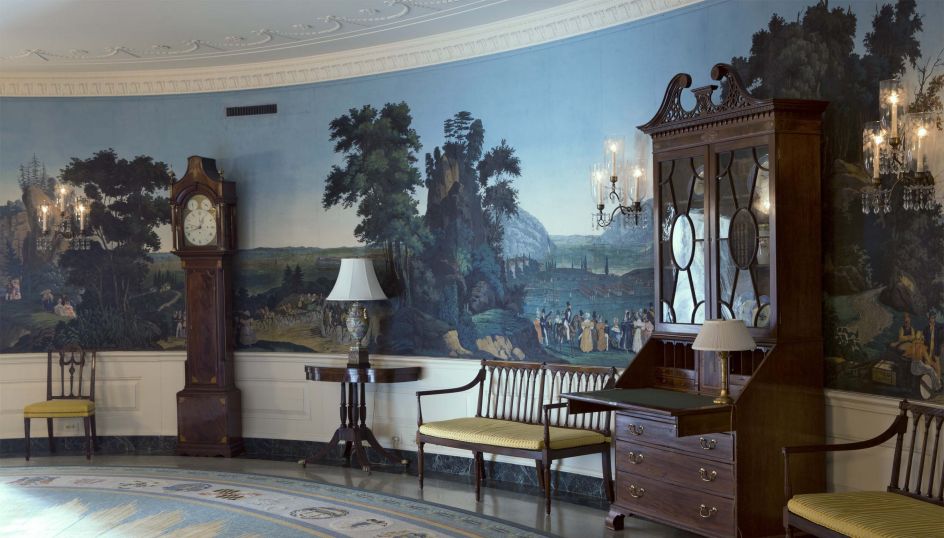
But it's not just the walls of this opulent hall that tell the fascinating story of the "New World conquest" - the room in its various incarnations has its own tale to tell: from simple boiler room to elegant reception area for the Presidents' international visitors, diplomats and politicians from around the globe.

And even the woman who determined its current look is a historic icon. Jacqueline Lee Bouvier, better known as Jackie Kennedy, wife of the 35th President of the United States of America. Upon entering the White House in 1961, the First Lady embarked on a huge project which included the comprehensive renovation and redesign of the interior. In her view, the Truman décor was too simple and didn't do the illustrious significance of the building justice. It consisted mainly of historic reproductions and contemporary patterns and materials. As a connoisseur and patron of fine arts, Jackie Kennedy wanted to change all that.



"Vues d'Amérique Nord" - views of North-America - was the official title of the wallpaper motif selected by her for the reception room on recommendation by a historian. It boasts monumental panoramas which, like travel journals, bear witness to the beautiful landscapes and the cultural achievements of the people who dwelled in them and shaped them. The panorama, which is based on etchings from the 1820s, comprises 32 scenes, amongst them Virginia's Natural Bridge, the Niagara Falls, the Bay of New York and Boston Harbour. Taking it in in all its glory, it feels a lot more like a landscapist's intricate painting than a mere wall covering. If you were to study it, you wouldn't find the repeated pattern typical for wallpapers.

Before it arrived at the White House in 1961, the design by wallpaper manufacturer Zuber adorned the walls of the Jones House in Maryland. Unfortunately, it was replaced with a grocery shop the same year. But before demolition, the precious wall covering was rescued and sold to the White House.


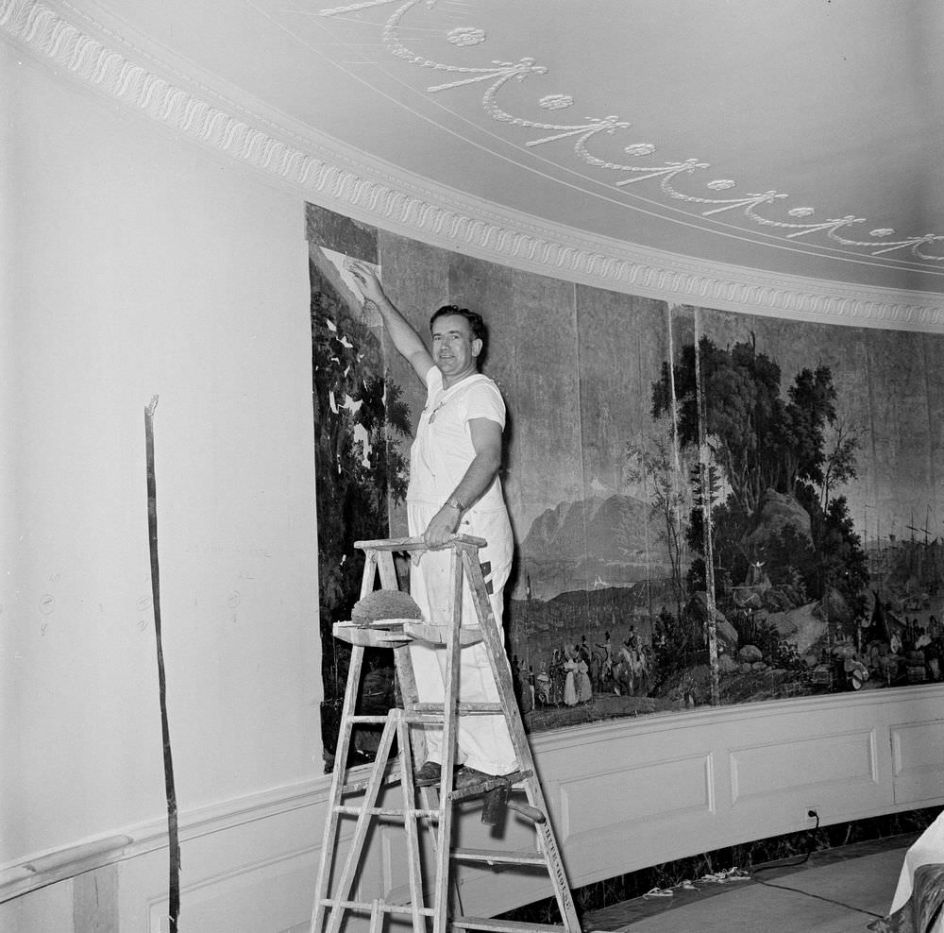


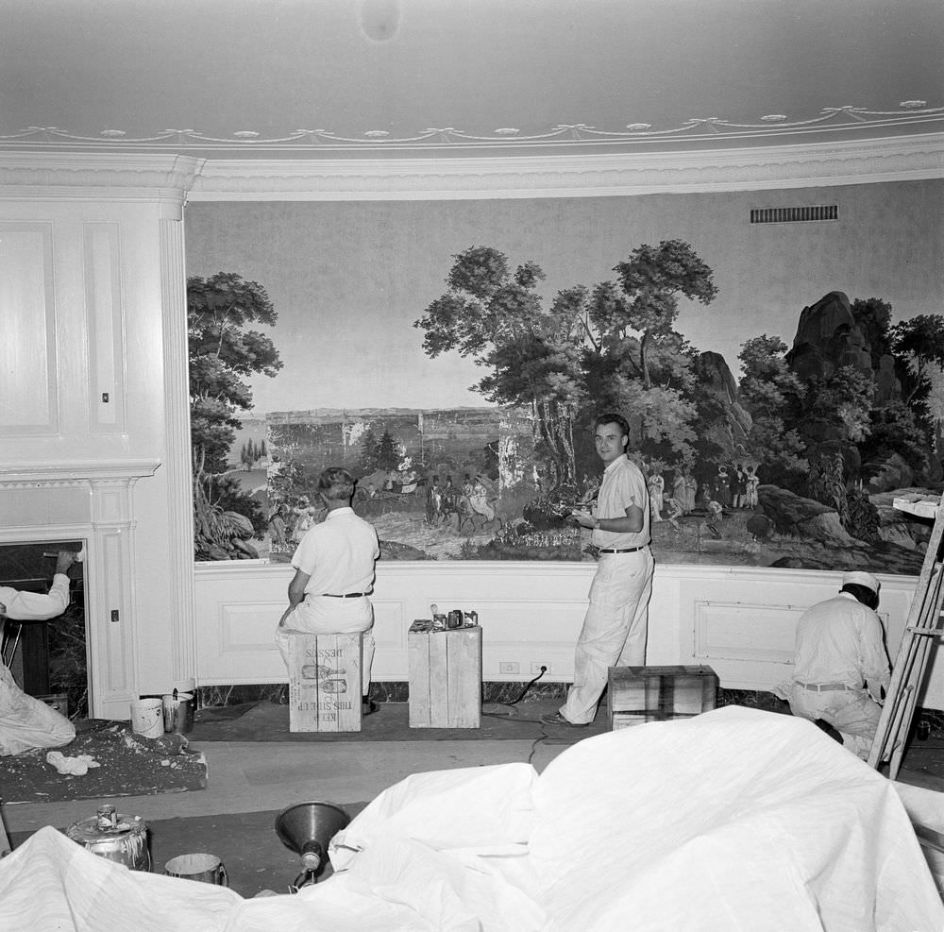




Zuber - this name doesn't just stand for a famous Alsace wallpaper manufacture of long standing, it is also the last of its kind. For nowhere else in the world is wallpaper still made in this traditional, labour-intensive manner. Just as it was when the manufacture was established in Rixheim, France, in 1797, the beautiful wallpaper and textile patterns are created with carved wooden blocks. Zuber & Cie, as the company is known, boasts an archive of more than 100,000 patterns cut into wood - historical documents which have long since been put under preservation order.

There is not much that endures in this world. Everything changes continuously. Who knows what will be left of our current production methods 200 years from now? Will we still design and decorate surfaces in the future, or will we perhaps merely be surrounded by digital and virtual rooms? As for Zuber, they have been able to hold their ground and retain their manufacturing processes for more than 200 years - despite enormous developments in the industry. But the White House, too, has shown quite some resilience and durability since its foundation stone was laid in the year 1792. Its new inhabitants will doubtlessly continue in the same vein. Some things never change...

Text: szim


